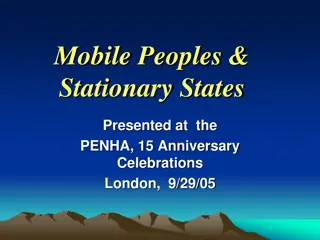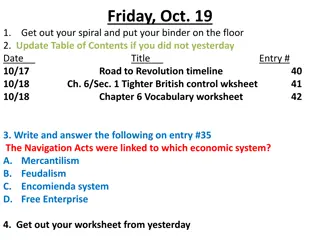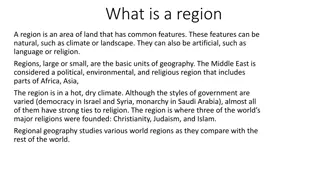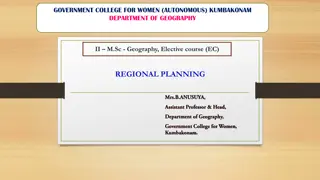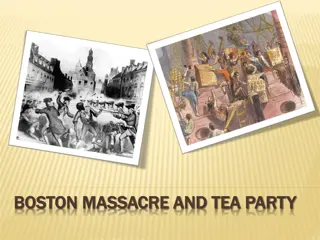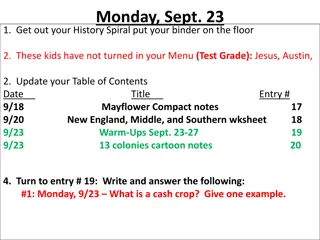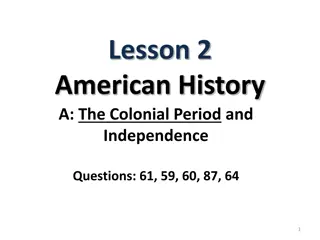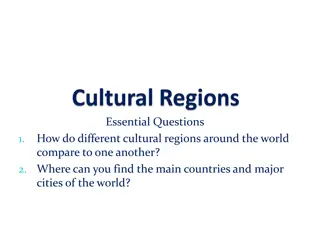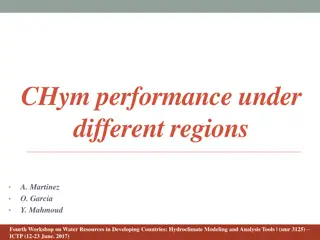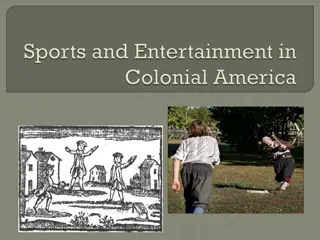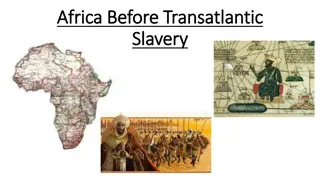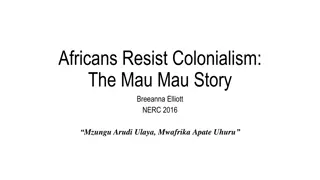Contrasting Early Colonial Regions in America
Early New England, Middle, and Southern colonies differed in economics, geography, culture, government, and relations with American Indians. New England focused on subsistence farming and democratic town meetings. The Middle colonies benefited from fertile land and trade along rivers. The Southern colonies thrived on large agricultural estates and a capitalist economy. Social classes varied among regions, from wealthy merchants to indentured servants. Each region's unique characteristics shaped its development and interactions during the colonial era.
Download Presentation

Please find below an Image/Link to download the presentation.
The content on the website is provided AS IS for your information and personal use only. It may not be sold, licensed, or shared on other websites without obtaining consent from the author. Download presentation by click this link. If you encounter any issues during the download, it is possible that the publisher has removed the file from their server.
E N D
Presentation Transcript
Compare regional differences among early New England, Middle and Southern colonies regarding economics, geography, culture, government and American Indian relations.
Practiced subsistence farming: planting only for you and your family Corn Plankton: good food source for fish and whales Lumber: furniture, barrels and shipbuilding Waterfalls: powered mills Rivers: transported goods
Towns were the heart of the New England society. Town Meetings: discuss local issues and problems, pass legislation and elect officials Voting limited to men who own property. Selectmen: a member of the local government that helps manage town affairs Felt like they had the right to govern themselves Set stage for the emergence of democratic government
Upper Class: Wealthy merchants, industry owners, Doctors, Lawyers, some Ministers Middle Class: Artisans which were skilled workers who knew how to manufacture goods (carpenters, masons) as well as innkeepers, retailers, sailors, ministers Lower Class: Unskilled workers, slaves, farmers, indentured servants
Fertile farmland with surplus crops Wheat Rivers transport products to ships (smaller ships sail the rivers to exchange European goods for farm goods) Towns arise at where the rivers empty into the ocean Very prosperous because of population boom (wheat needed to feed the population)
Upper Class: Rich Farmers, Doctors, Lawyers, Mill Owners, Owners of large lands rented to tenant farmers Entrepreneurs: risked their capital by buying land, equipment, and supplies and selling them for a profit Capitalism: an economic and political system in which a country s trade and industry are controlled by private owners for profit, rather than by the state Capitalist: a wealthy person who uses money to invest in trade and industry Middle Class: Most farmers, teachers, small business owners Lower Class: Slaves and Poor tenant farmers
Cash Crop: North Carolina, Virginia and Maryland: Tobacco South Carolina: rice and indigo Rivers transport crops Plantations, large workforce, intensive manual labor required Use indentured servants or slaves to cultivate crops Indentured servants work until contract has expired. Supplied passage to America, room, board and clothes
Upper Class: Wealthy landowners (planter elite), Doctors, lawyers, business owners Influential in politics and economy Self sufficient communities Middle Class= Yeomen farmers, overseers, small shop owners, peddlers, teachers Yeomen farmer= owned his own land and family worked Practiced subsistence farming Peddlers= a person who goes from place to place selling small goods Lower Class: Slaves, indentured servants, backcountry farmers
First legislative assembly of elected representatives in North America All free men can vote until Governor Berkeley manipulates House of Burgesses into making only men who own property have the right to vote Legislative body in Virginia 22 original delegates 1619-1776
Bacons Rebellion: Yeomen farmers want more land, only land left was near Native Americans, thus expanding the colony is a no go; A fight breaks out with Native Americans, Berkeley does nothing, upsets yeomen
Bacons Rebellion continued Nathaniel Bacon organizes a militia and attacks Native Americans; Berkeley gets the House of Burgesses to address the situation; The burgesses allow Bacon to attack Native Americans and restore vote to all free men Bacon is upset and seizes control of Jamestown, Berkeley flees and raises own army They fight, but it ends quickly because Bacon dies
Bacons Rebellion continued: Everyone needs to have land available to them Increases purchasing of slaves
















